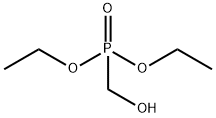Hydroxyethyl Cellulose
Synonym(s):‘Cellosize QP-40’;Hydroxyethylcellulose
- CAS NO.:9004-62-0
- Empirical Formula: C29H52O21
- Molecular Weight: 0
- MDL number: MFCD00072770
- EINECS: 618-387-5
- SAFETY DATA SHEET (SDS)
- Update Date: 2024-05-14 17:56:46
What is Hydroxyethyl Cellulose?
Toxicity
May cause chemical pneumonitis in case of inhalation and skin irritation. Animal data suggests potential alteration in female fertility.
Description
Hetastarch, another nonproteinaceous colloid, is a complex mixture of ethoxylated amylopectins
ranging in molecular weight from 10 to 1,000 kDa (average molecular weight, ~450 kDa). When
infused as a 6% solution, hetastarch approximates the activity of human albumin. The larger
molecular weights, however, increase its intravascular residence time as well as its plasma
expansion effects relative to albumin.
Hetastarch is synthetically produced, so it is degraded more
slowly and is less antigenic than other colloids. Despite these advantages, hetastarch is quite
expensive and also has no oxygen-carrying capacity.
The Uses of Hydroxyethyl Cellulose
hydroxyethyl cellulose is a thickener, protective colloid, binder, stabilizer, and suspending agent. It is obtained from wood pulp Copyright 2014 Cengage Learning. All Rights Reserved. May not be copied, scanned, or duplicated, in whole or in part. Due to electronic rights, some third party content may be suppressed from the eBook and/or eChapter(s). Editorial Review has deemed that any suppressed content does not materially affect the overall learning experience. Cengage Learning reserves the right to remove additional content at any time if subsequent rights restrictions require it. or chemical cotton by treatment with an alkali.
Background
Hydroxyethyl cellulose is a polysaccharide derivative with gel thickening, emulsifying, bubble-forming, water-retaining and stabilizing properties. It is used as a key ingredient in many household cleaning products, lubricants and cosmetics due to its non-ionic and water-soluble nature. It is often used as an ingredient in ophthalmic pharmaceutical preparations such as artificial tear solutions and adjunct agent in topical drug formulations to facilitate the delivery of drugs with hydrophobic character.
What are the applications of Application
Hydroxyethyl-cellulose is A network-forming polymer in capillary electrophoresis of DNA restriction fragments.
Indications
For alleviating surface irritation in topical ocular administrations, such as artificial tear solutions. Hydroxyethyl cellulose is also found in topical formulations to aid in more efficient drug diffusion across the membranes.
Pharmacokinetics
Hydroxyethyl cellulose acts as a demulcent by relieving inflammation or irritation and dryness of eyes. It acts as one of the key ingredient and viscosity-enhancing agent to prolong corneal contact time and increase intraocular drug levels .
Metabolism
Not Available
Properties of Hydroxyethyl Cellulose
| Melting point: | 288-290 °C (dec.) |
| Density | 0.75 g/mL at 25 °C(lit.) |
| storage temp. | 2-8°C |
| solubility | H2O: ≤5 wt. % at 20 °C |
| form | powder |
| color | Light brown powder |
| Odor | Odorless |
| Water Solubility | almost transparency |
Safety information for Hydroxyethyl Cellulose
Computed Descriptors for Hydroxyethyl Cellulose
| InChIKey | CWSZBVAUYPTXTG-UHFFFAOYSA-N |
| SMILES | O1C(CO)C(OC2C(O)C(O)C(OC3C(OCCO)C(O)C(OC)C(CO)O3)C(COC3C(O)C(O)C(OC)C(CO)O3)O2)C(O)C(O)C1C |
Abamectin manufacturer
Prachin Chemical
S D Fine Chem Limited
New Products
3-N-BOC-(S)-AMINO BUTYRONITRILE 4-Piperidinopiperidine 2-Methyl-4-nitrobenzoic acid 2-(4-bromophenyl)-2-methylpropanoic acid 4-Acetyl-2-methylbenzoicacid Acetyl-meldrum's acid Ethyl-4-Pyrazole carboxylate 2,6 Di acetylpyridine 2,6-Pyridinedimethanol 5,7-Dichloro-3H-Imidazo[4,5-B]Pyridine 5-Bromo-2-Methoxy-4-Methyl-3-Nitropyridine 2-Fluoro-5-Iodopyridine 2-Fluoro-5-Methylpyridine 2-Chloro-3-Bromo-5-Amiopyridine METHYL-4-(BUTYRYLAMINO)3-METHYL-5-NITROBENZOATE TRANS-CYCLOBUTANE-1,2- DICARBOXYLIC ACID 5-Nitro indazole R-(-)-5-(2-AMINO-PROPYL)-2-METHOXY-BENZENESULFONAMIDE 1,3-cyclohexanedione 4-Aminophenaethylalchol (S)-(+)-4-BENZYL-2-OXAZOLIDINONE 3-NITRO-5-ACETYL IMINODIBENZYL 1-HYDROXY-4-METHYL6-(2,4,4-TRI METHYL PHENYL)-2-PYRIDONE MONO ETHANOL AMINE(PIROCTONE OLAMINE) 4-FLUORO PHENYL MAGNESIUM BROMIDE 1.0 M IN THFRelated products of tetrahydrofuran








You may like
-
 9004-62-0 Hydroxyethyl cellulose 98%View Details
9004-62-0 Hydroxyethyl cellulose 98%View Details
9004-62-0 -
 Hydroxyethyl cellulose 99%View Details
Hydroxyethyl cellulose 99%View Details
9004-62-0 -
 2,3 Dichloro-4-Hydroxy Aniline 39183-17-0 99%View Details
2,3 Dichloro-4-Hydroxy Aniline 39183-17-0 99%View Details
39183-17-0 -
 17673-56-2 99%View Details
17673-56-2 99%View Details
17673-56-2 -
 13463-67-7 Titanium Dioxide 99%View Details
13463-67-7 Titanium Dioxide 99%View Details
13463-67-7 -
 143-07-7 99%View Details
143-07-7 99%View Details
143-07-7 -
 Ethanolamine 141-43-5 99%View Details
Ethanolamine 141-43-5 99%View Details
141-43-5 -
 20776-67-4 99%View Details
20776-67-4 99%View Details
20776-67-4